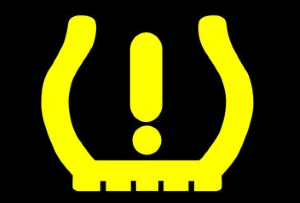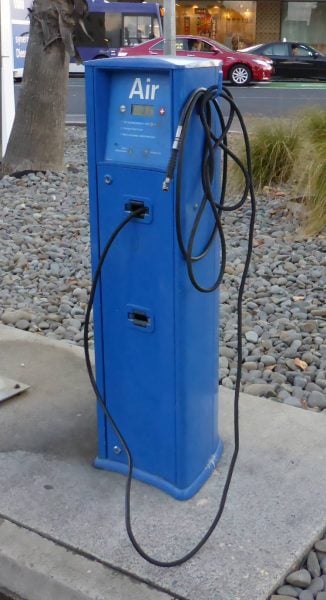Temperature changes affect the pressure of the air in your tyres, and it’s not your tyres that support your vehicle, it’s the air within the tyres. Four factors change tyre pressure: the ambient temperature (i.e. the air temperature outside the tyre), exposure to sun, the temperature of the tyre itself and leakage (either natural or by a puncture).
Every vehicle manufacturer has a recommended tyre and recommended inflation pressure for that tyre based on the weight and characteristics of the vehicle called the cold inflation pressure, but the actual pressure in the tyre can vary significantly due to the weather and other factors. You can usually find a plate riveted to one of the door pillars of your car which shows the recommended cold inflation pressures for the front and rear tyres.
Tyre pressure is usually measured in pounds per square inch, or PSI (even though we live in a country that uses the metric system). You might also see kilopascals (kPa) used. The air in the tyre expands (increases pressure) when it’s warmed and contracts as it cools down.
Change in tyre pressure due to the ambient temperature
In winter your tyres will have less pressure than in summer, and lower pressures in your tyres increases fuel consumption and wear on the tyres, lengthens the braking distance and affects steering and handling. In extreme cases you end up with an under-inflated tyre which can overheat and delaminate.
A typical pressure for a tyre is around 32 PSI for a car tyre and around 85 PSI for a heavy vehicle tyre, and for every decrease of 1 degree Celsius in ambient temperature the tyre pressure drops by around 0.19 PSI.
In places such as Christchurch the temperature can vary more than 20 degrees Celsius in one day, which means almost 4 PSI difference in tyre pressure. If you fill your tyres when the outside temperature is 23 degrees, then take your vehicle out when it’s 3 degrees at night, your tyre pressure will have dropped significantly. Of course, if it’s 3 degrees, there’s the risk of ice forming – check out or course regarding driving in icy weather.
Change in tyre pressure due to driving
The rolling resistance of the tyres on the road heats them up. This is because the rubber is deformed under pressure as well as undergoing friction from the road surface and those actions produce heat. On a long journey your tyres will become quite warm, and this is the worst time to check the pressure or to fill the tyres. Tyres should always be filled when they are cold.
During driving, tyre pressure increases around 1 PSI for every five minutes for the first twenty minutes and then stabilises and this means that even a short drive to the garage to check your tyres can result in an inaccurate reading. Driving in wet weather will not cause the same amount of heat buildup as driving in dry weather as water on the road cools the tyres.
Change in tyre pressure due to direct sun exposure
Tyres left in the sun can gain as much as 15% pressure as the black sidewalls absorbs the sun’s heat.
Automatic tyre pressure monitoring systems
Many cars comes with a tyre pressure monitoring system which displays a light on the dashboard if tyre pressures are outside a predefined range.

How do you reduce the effect of temperature change on tyre pressure?
Checking your tyres every month is a good habit to be in, and remember to check your spare tyre or space saver. You can use a foot pump, but it’s easier to go to a service station and use their air system. While all tyres lose air gradually naturally, if you find one tyre is losing it more rapidly you might have a slow puncture.

You can have your tyres filled with nitrogen which maintains a more consistent pressure when heated or cooled.
For mathematical formulas to determine tyre pressure vs temperature, check out this article.

